The Apartheid Museum
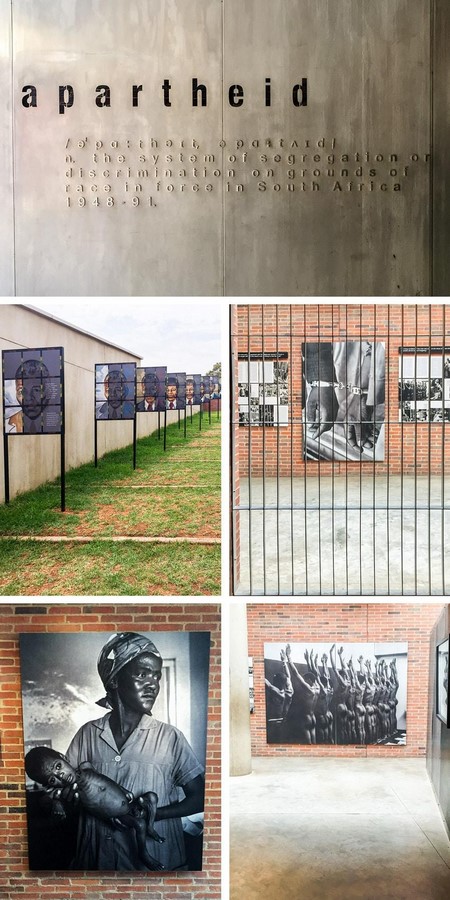
Inception
Whenever we think of a museum, the first thing that comes to our mind is, that it will tell you a story of the past that maybe we haven’t come across.
The word “apartheid” means apartness, the apartness between South African communities that turned whole history upside down. This history needed a narrator who would focus less on historical objects and would rather take the role of interrogator to convey the narration.
Apartheid time – division
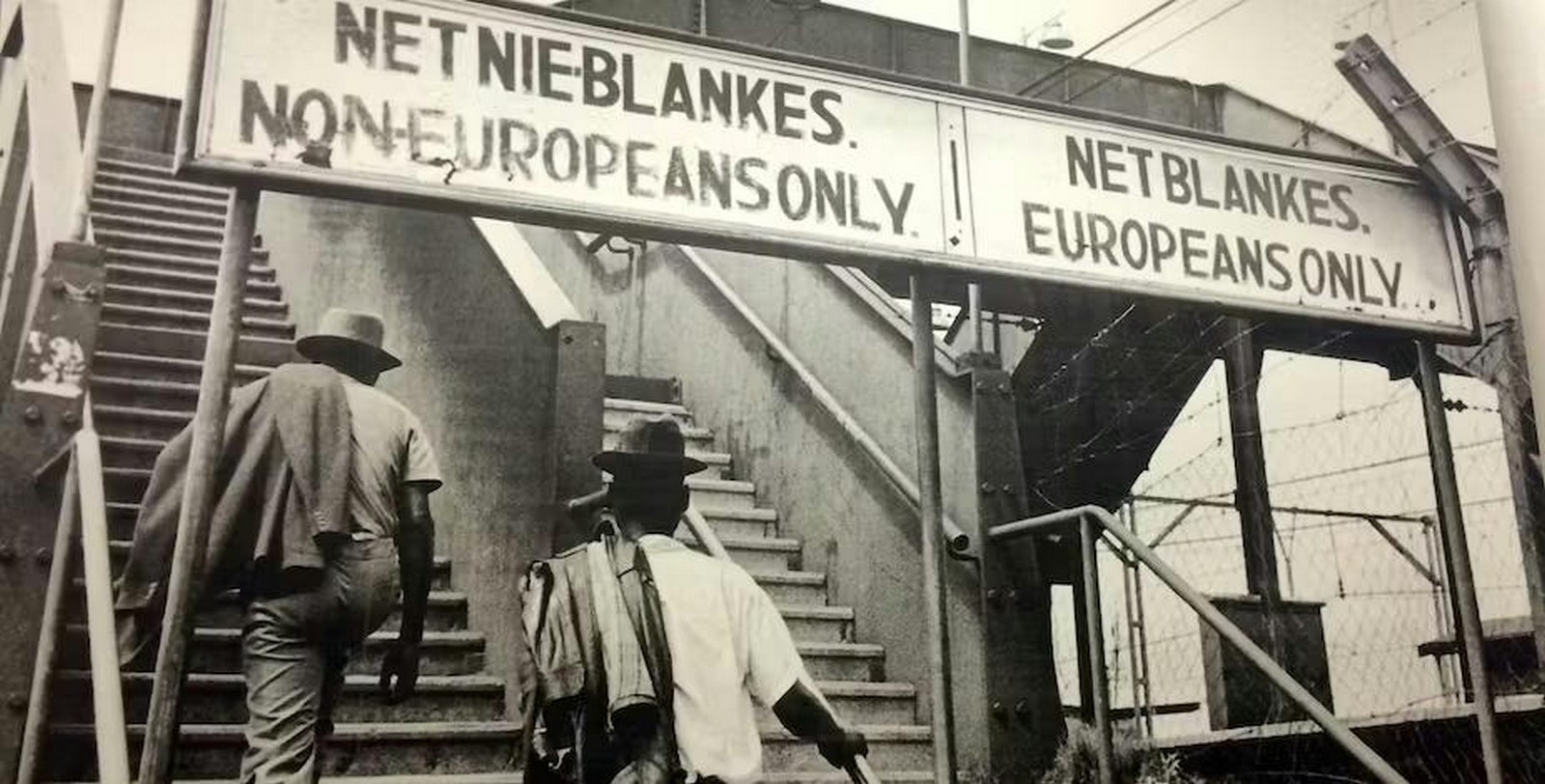
Hence, Apartheid Museum tries to illustrate victory procured over unsettling history, during the times proclaimed by the natives as Apartheid, is one of the notable memorial museums that offer an architectural language to encapsulate the mass racist segregation of society in South Africa.
Apartheid Museum – divided entrance
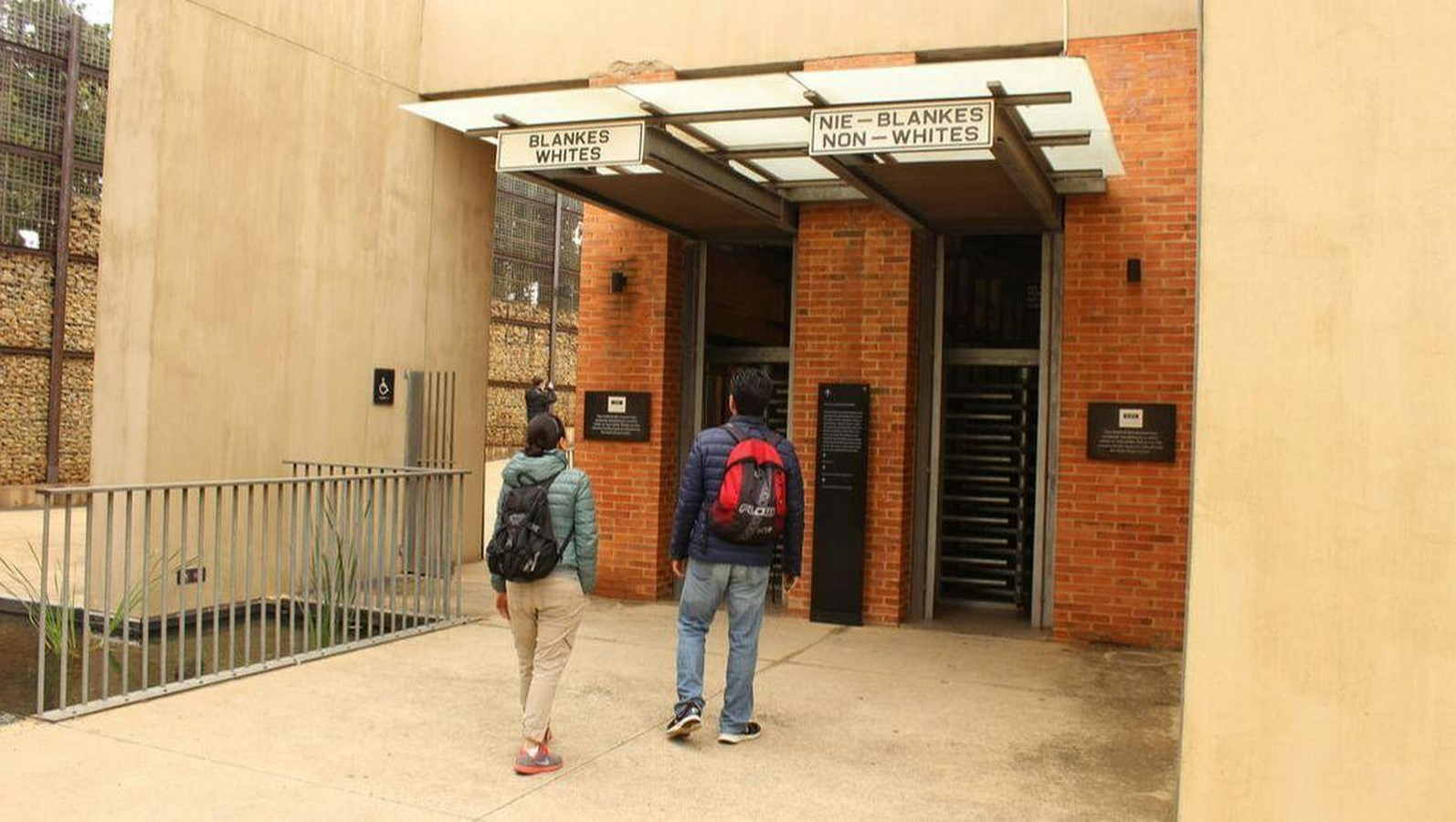
Apartheid Museum – randomly discriminated tickets
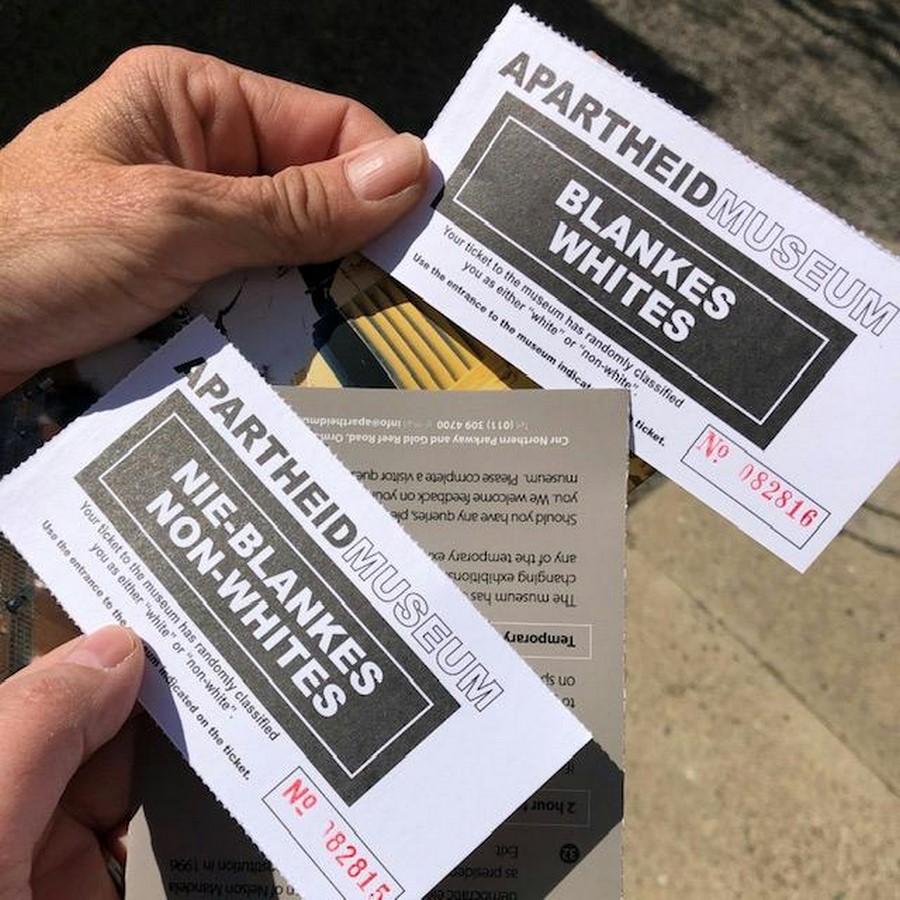
Replication of the past in these modern times created by architectural interventions, generates empathy in visitors’ hearts. Apartheid museum’s separate entrances precipitate the bitter apartness in visitors’ minds and give them a hint of discrimination done in apartheid.
Context
Apartheid Museum which lies in Johannesburg, South Africa, was constructed in 2001 on a 7 – hectare site, adjacent to the Gold Reef city casino and fairground. Most museums get built over sites significant to events that occurred in the past, but the apartheid museum stands on the site reclaimed from a played-out gold mine that was running from the 1870s when the gold was first discovered in South Africa. Hence, it suggests a distinct perspective to the narration. A perspective of looking forward to the future while accepting the reality of the past.
Apartheid Museum – view of adjacent amusement park
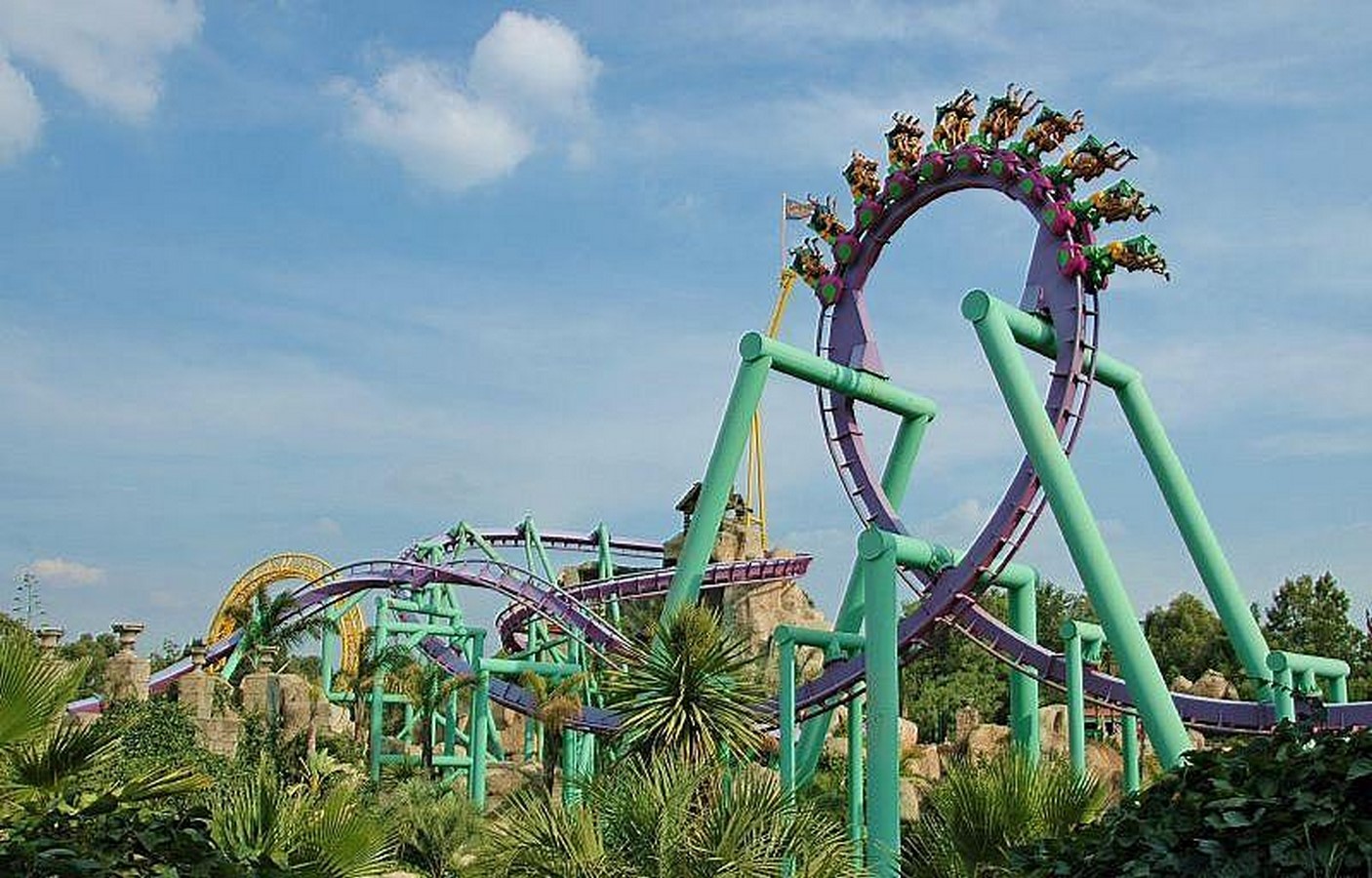
As it is adjacent to an amusement park, the Apartheid museum had an architectural challenge to reveal those dark times substantially, in between the adventurous screams, colorful signs, and merry vibes. That being the case, a team of curators, filmmakers, historians, museologists, and designers was hired for the successful interpretation of history in the provided setting.
Enclosure
Apartheid museum contours the whole narration inside conceptualized undressed walls of native materials. Thick, bare brick and stone walls amalgamate with the exposed concrete walls and make the museum’s environment peculiar and vernacular. The organic form of structure is parallely aligned with rectangular spaces which provide sculptural depth to the Apartheid museum.
Apartheid Museum – staircase and exposed concrete wall
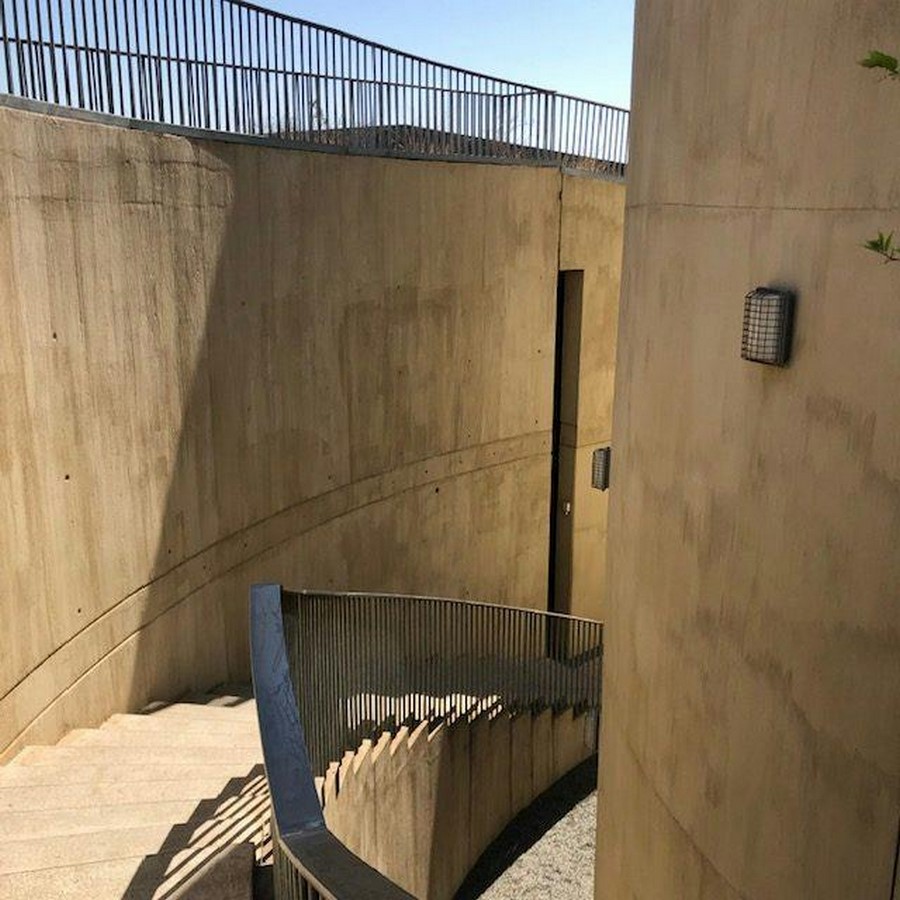
A play of levels achieved by ramps and staircases engages visitors in the spaces created by the differences in heights. Also, these ramps and staircases provide directional guidance to the wanderers, who occasionally get themselves distracted by the informative and appealing artifacts throughout the structure.
Apartheid museum – ramp and stone wall built by the stones piled by visitors while pledging to fight racism
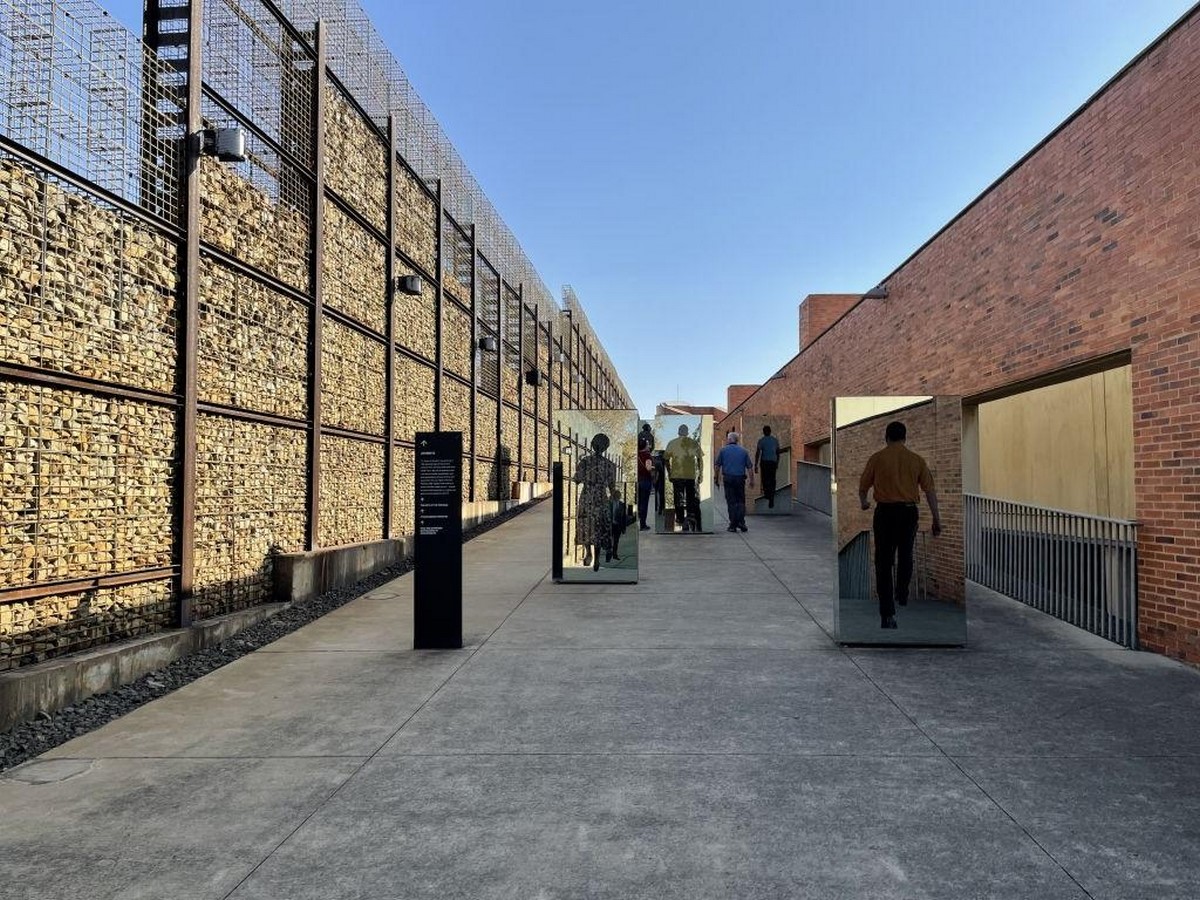
Apartheid museum is a combination of spaces, arranged to generate emotions throughout the visit, like every dark, detailed, and enclosed space which renders past events, opens up in bright, light, and extended open-to-air space which upholds the modernist principles of the Apartheid museum. The whole tale of history is cataloged in the tall and bold walls, in the form of 3d sculptures, 2d paintings, photographs, dialogues, and texts, which are displayed in the maze of vertical rods, that induce a sense of imprisonment while taking a stroll.
Apartheid Museum – internal spaces
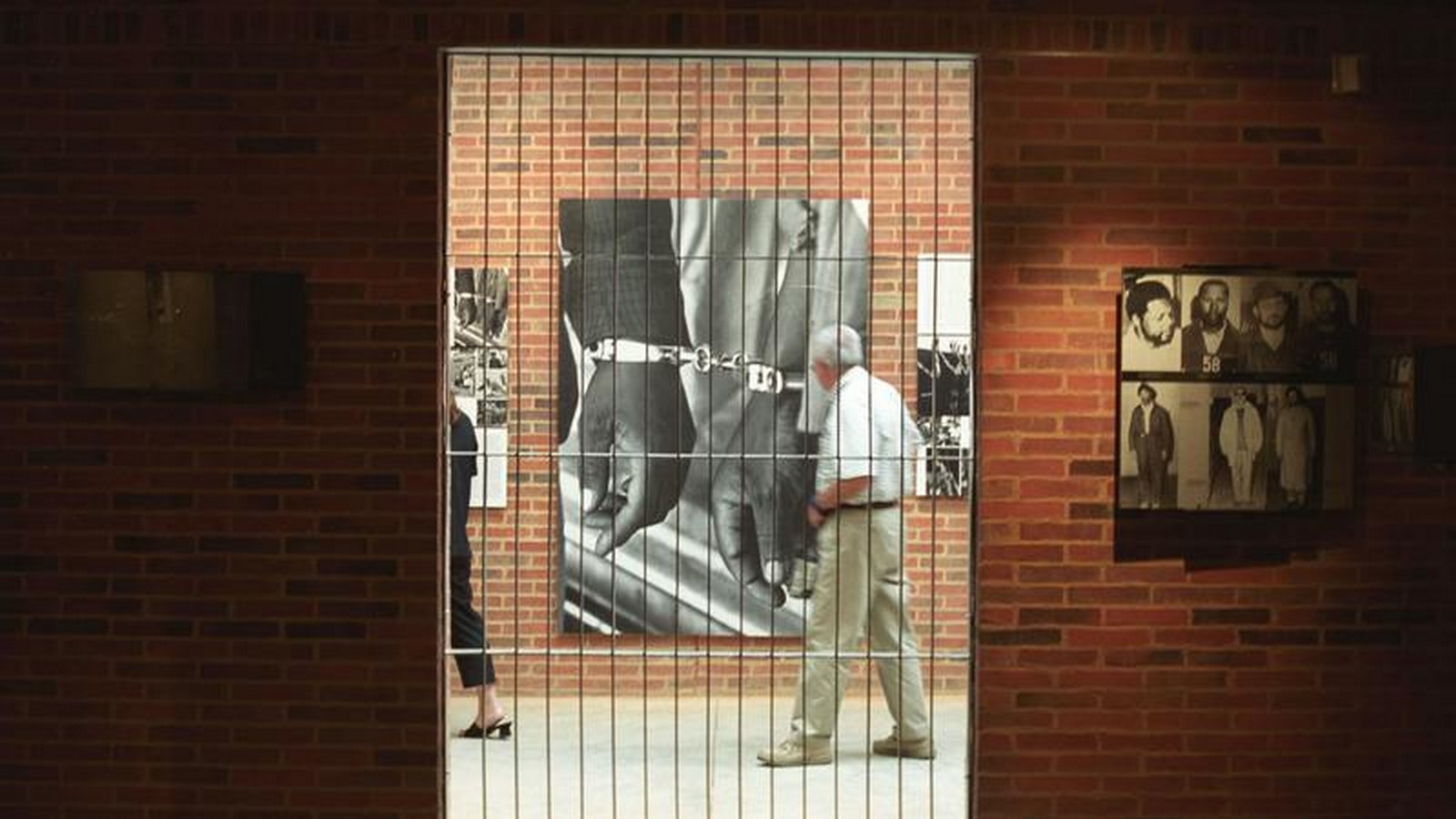
Narration
Apartheid museum features three different kinds of exhibits: temporary, Mandela, and permanent. There are twenty-one displays in the museum that chronicle the history of apartheid.
The narration starts with the hall of reception where visitors are introduced to discrimination based on race and how it culminated in taking away the basic rights of human beings of a particular race. Apartheid museum has been differentiated into various halls based on the progression of the storyline. The Hall of Congestion, Hall of Gathering, and Hall of Separation display the initial phases of the apartheid and help visitors to get hold of the scenario more specifically. Apartheid Museum then further continues to showcase the resistance that arises from the earlier narration with the help of architecturally separated spaces like the Hall of Early Resistance, Cellspaces, Hall of Resistance, and Hall of Witness. Areas like the election Hall, memorial, and international struggle then tell visitors the tale of the victory of victims over victimizers and how it initiated a modernist positive start for all the communities regardless of their races. The flow of spaces weaved together by intelligent architectural planning holds the whole narration together and justifies the grounds of the Apartheid museum.
Apartheid museum – permanent exhibition
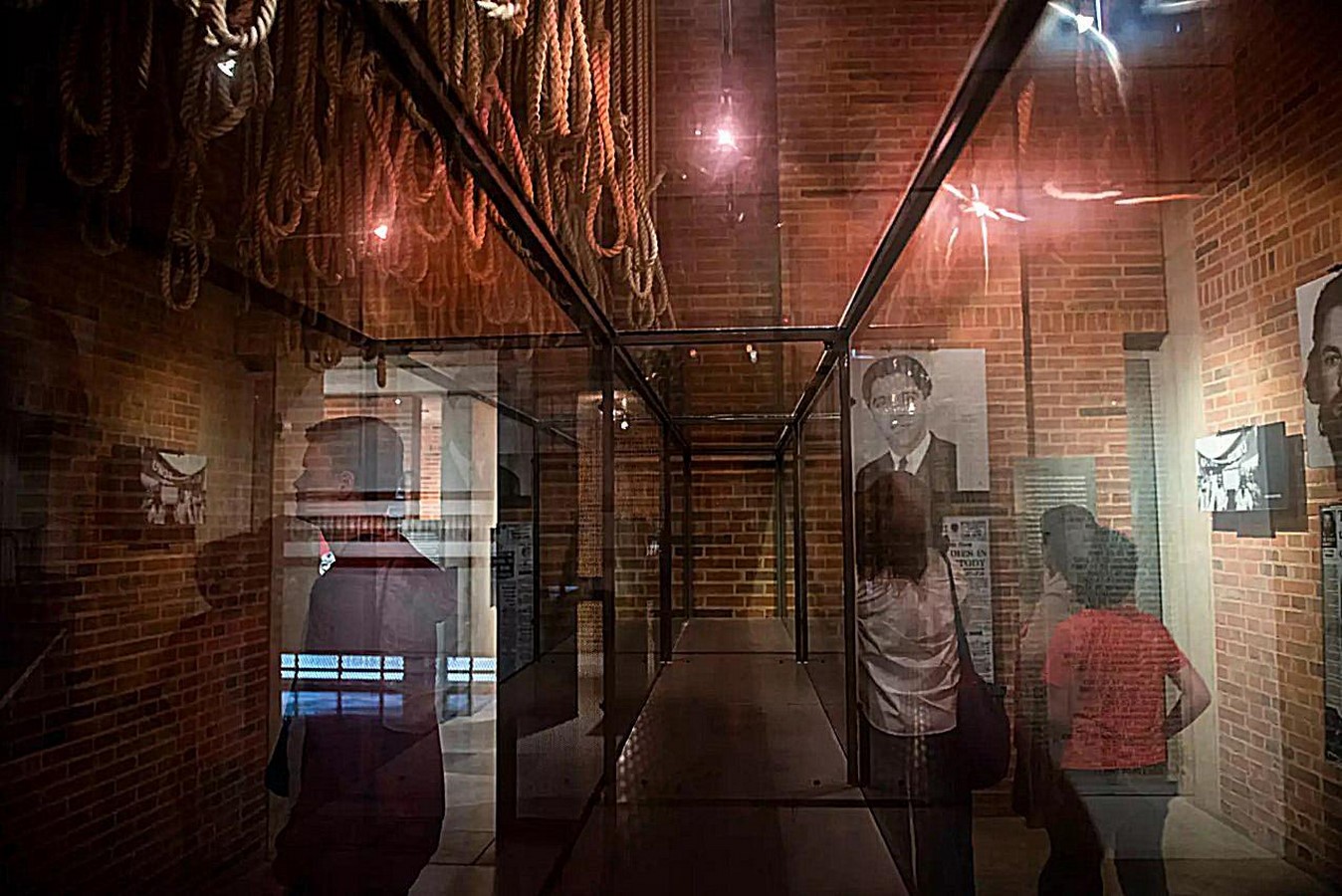
Confession
Apartheid Museum has created a space where you can pledge to fight racism wherever you see it. This is something visitors are urged to do before leaving. A rock is taken from the pile on the right and placed on the pile on the left to represent this. This left pile is then directed to construct the rock walls around the museum, symbolizing all the people who have passed through and committed to a world free of discrimination. Apartheid Museum’s fundamental goal is to serve as a declaration for the future, to learn from the past and to strive to overcome discrimination whenever the world faces it again.
Apartheid Museum – goal
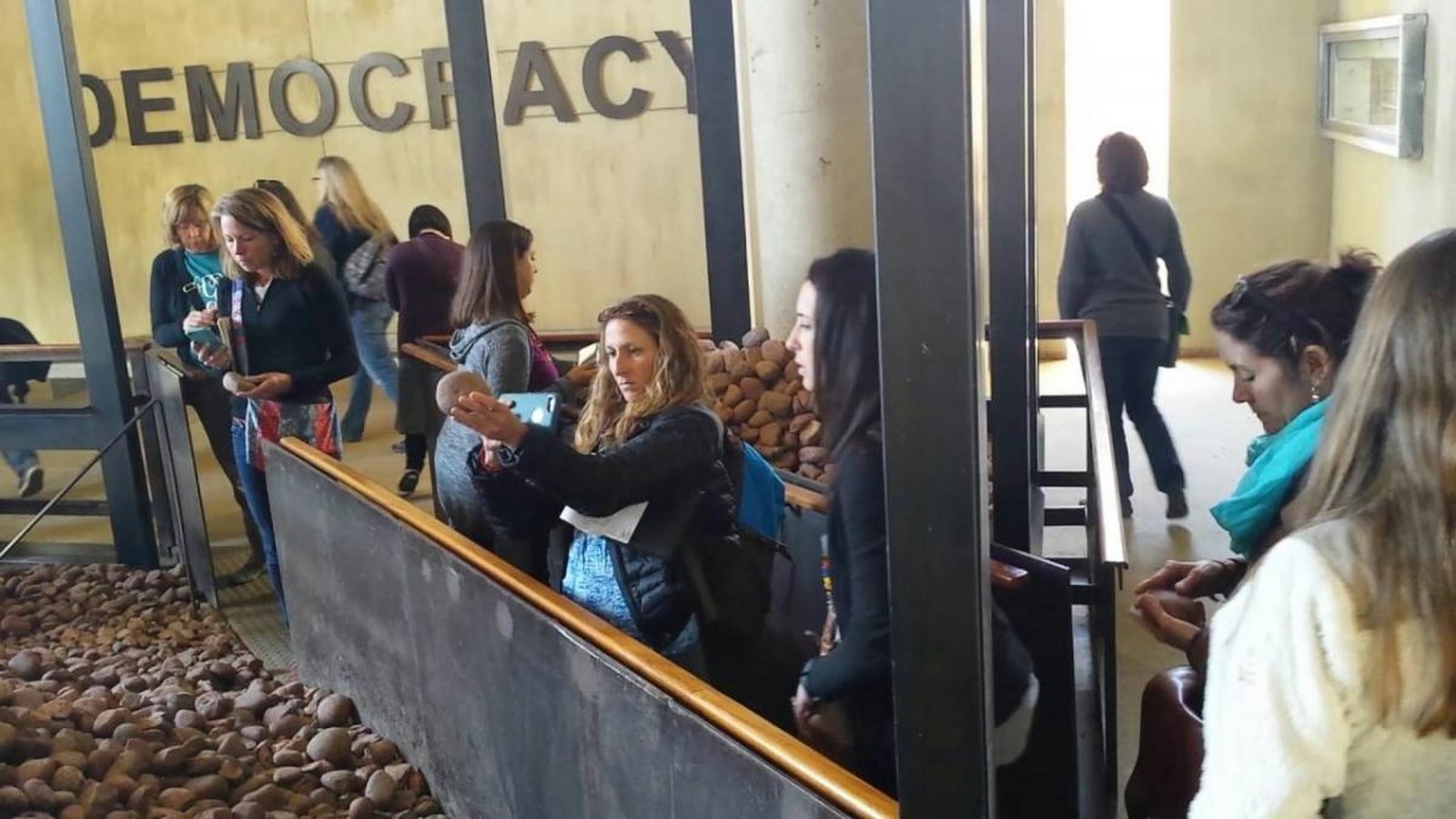
Every exhibition the Apartheid Museum confines aims to induce a sense of responsibility in every visitor’s mind, which will strengthen them to resist Apartness in every possible aspect they could encounter in this modern world.
Apartheid Museum – Protest ( photograph stating similarities between past and present )

References :
Red and Gold: A Tale of Two Apartheid Museums
Findley, L. (2014b) ‘Red and Gold: A Tale of Two Apartheid Museums,’ Cca [Preprint]. https://www.academia.edu/6821525/Red_and_Gold_A_Tale_of_Two_Apartheid_Museums.
A R T T H R O B / R E V I E W S
A R T T H R O B / R E V I E W S (no date). https://artthrob.co.za/02mar/reviews/apartheid.html.
The Apartheid Museum: Performing a Spatial Dialectics
Rankin, E. and Schmidt, L. (2009b) ‘The Apartheid Museum: Performing a Spatial Dialectics,’ Journal of Visual Culture, 8(1), pp. 76–102. https://doi.org/10.1177/1470412908100901.






















